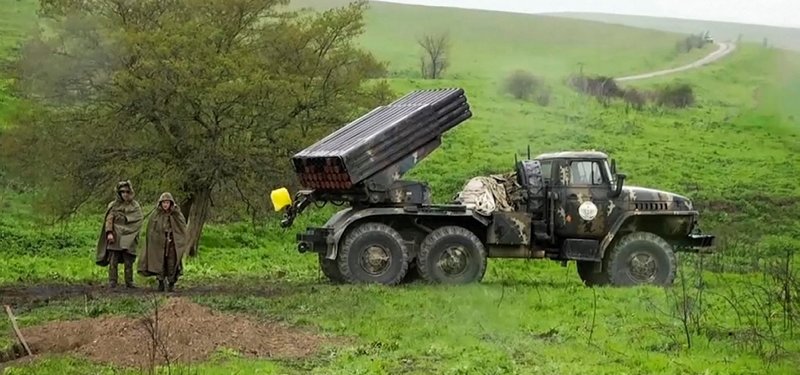
Syrians of Armenian origin fabricate claims on use of SNA mercenaries in Karabakh fighting - CCBS
Refuting the claims on the deployment of Syrian mercenaries to fight for Azerbaijan, Bulgaria-based think tank CCBS said: “Interestingly, the source was a Syrian user of Armenian origin, Kevork Almassian. Without mentioning any specific and reliable source, Almassian put forth his 'insight' on Syrian mercenaries as a fact."
- World
- Daily Sabah
- Published Date: 09:59 | 09 October 2020
- Modified Date: 10:08 | 09 October 2020
Rising claims of use of mercenaries in the Azerbaijan-Armenia conflict have been found to be fake news produced by social media users, a research conducted by the Bulgaria-based think tank, Caspian and Black Sea Analysis Foundation (CCBS) said.
Following growing reports and allegations, the CCBS investigated the news and attempted to verify the reports with independent experts.
Regarding the Sept. 21 story, "Azerbaijan's Syrian mercenaries," which includes the first "reporting" on the alleged deployment of Syrian mercenaries to fight for Azerbaijan, CCBS said: "Interestingly, the source was a Syrian user of Armenian origin, Kevork Almassian. Without mentioning any specific and reliable source, Almassian put forth his 'insight' on Syrian mercenaries as a fact."
It was determined that on the same day, self-proclaimed investigative journalist, Lindsey Snell, tweeted her report on the deployment of "Turkish-backed Syrian National Army," by referring to Almassian.
Accordingly, Snell also shared a photo of unknown people in a plane bound for an unidentified destination. The photo was accompanied by a comment on the Hamza Division's supposed arrival in Baku. "Ms. Snell`s sympathy with the Armenian and Kurdish causes was also noticed by the user based on the former's tweets," the think tank said.
The CCBS added that Snell's tweets were even picked up by a media outlet, the Greek City Times.
"Our investigation found out that the majority of further mentions of the 'Hamza Division news' were simply quoting those initial sources tracking back to Snell's unverified tweet," the CCBS said.
The "virtual life" of Syrian mercenaries progressed to the next stage through the use of their deaths. Likewise, the CCBS said another fabrication of "evidence" included photos of a soldier who actually died of chronic illness in a Turkish hospital and another killed in northern Iraq "to prove" Turkish soldiers were being killed in the Nagorno-Karabakh battles. The think tank found that Abdurrahman Temelli, the uncle of the fallen soldier, Serdar Temelli, had expressed resentment on social media regarding the fake news.
Contrary to the fake news, Serdar Temelli lost his life during Turkey's Operation Claw-Tiger in northern Iraq. Abdurrahman Temelli said an Armenian Defense Ministry official had shared his nephew's photo as a soldier who died in Nagorno-Karabakh.
Another method determined to be widely used was photoshopping pictures to make them appear to have been taken amid the Azerbaijan-Armenia conflict.
"Another primitive 'proof' (a photo 'depicting' Syrians taking selfies while battling on the Azerbaijani side) was exposed as a photoshopped image: The fake news creators simply added the Azerbaijani flag to the photos of some Middle Eastern-looking folks," it said.
The CCBS underlined that the use of fake news has not been limited solely to social media.
It stated that a Middle Eastern media outlet circulated news referencing the Syrian Observatory for Human Rights (SOHR). "The supposed mission of those militants was limited only to protect the oil fields in Azerbaijan," the media outlet said, quoting the SOHR.
Yet, the CCBS stated that Azerbaijan's oil fields are located on and offshore in the Caspian Sea, 300-400 kilometers (185-250 miles) from Nagorno-Karabakh and the theater of the military operations. Furthermore, it pointed out that these oil fields are operated by a consortium of leading international oil companies from multiple countries. In this case, the CCBS said, "The aforementioned claim, the use of 'illegal mercenaries on the oil fields' must be happening under the watch of those companies."
"The virtual battle of fake news generators will continue adding another layer of complexity by both hindering the stop of the bloodshed and by paving the way for dragging multiple third parties into the conflict," the CCBS said.
Armenia and Azerbaijan have been locked in a bitter stalemate over the Nagorno-Karabakh region since the collapse of the Soviet Union.
The fiercest clash between Armenian and Azerbaijani forces over the occupied region ignited on Sept. 27.
- Azerbaijani army liberates several more areas in Armenian-occupied Upper Karabakh
- Microsoft to let employees work from home permanently: report
- Twitter tightens rules to thwart election threats
- White House proposes $1.8 trillion stimulus, Trump says go bigger
- Trudeau warns Canada at ‘tipping point’ in virus battle

